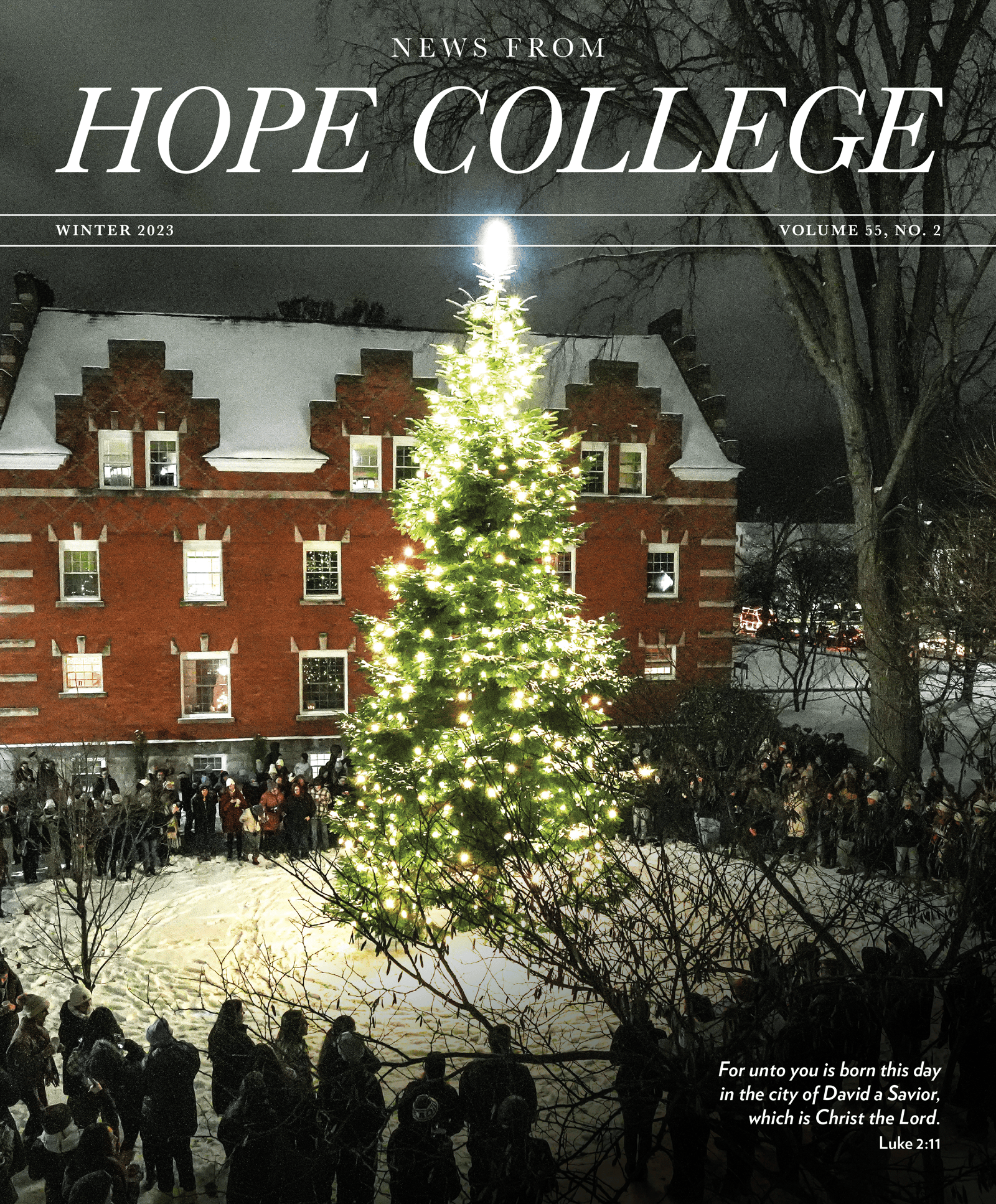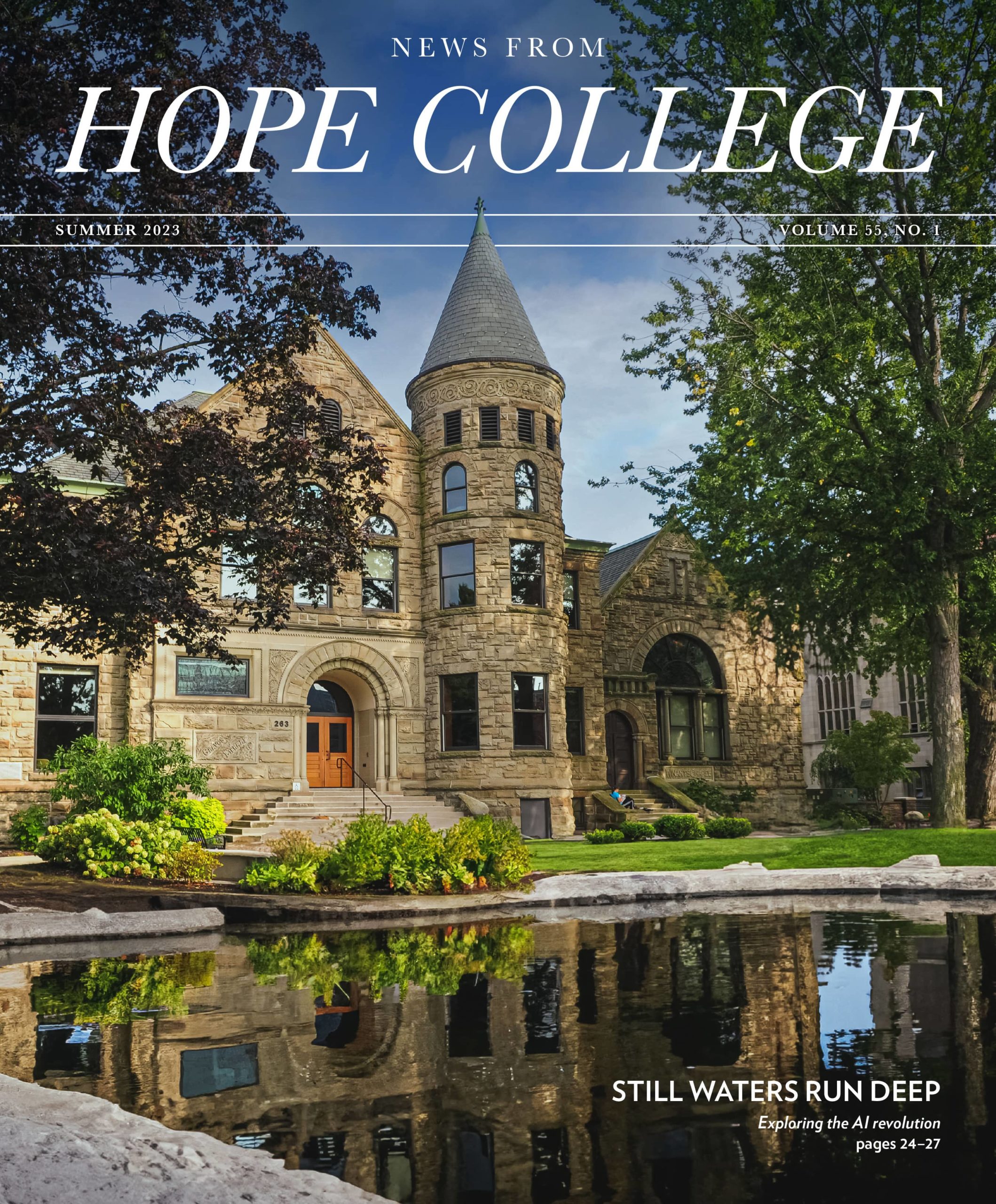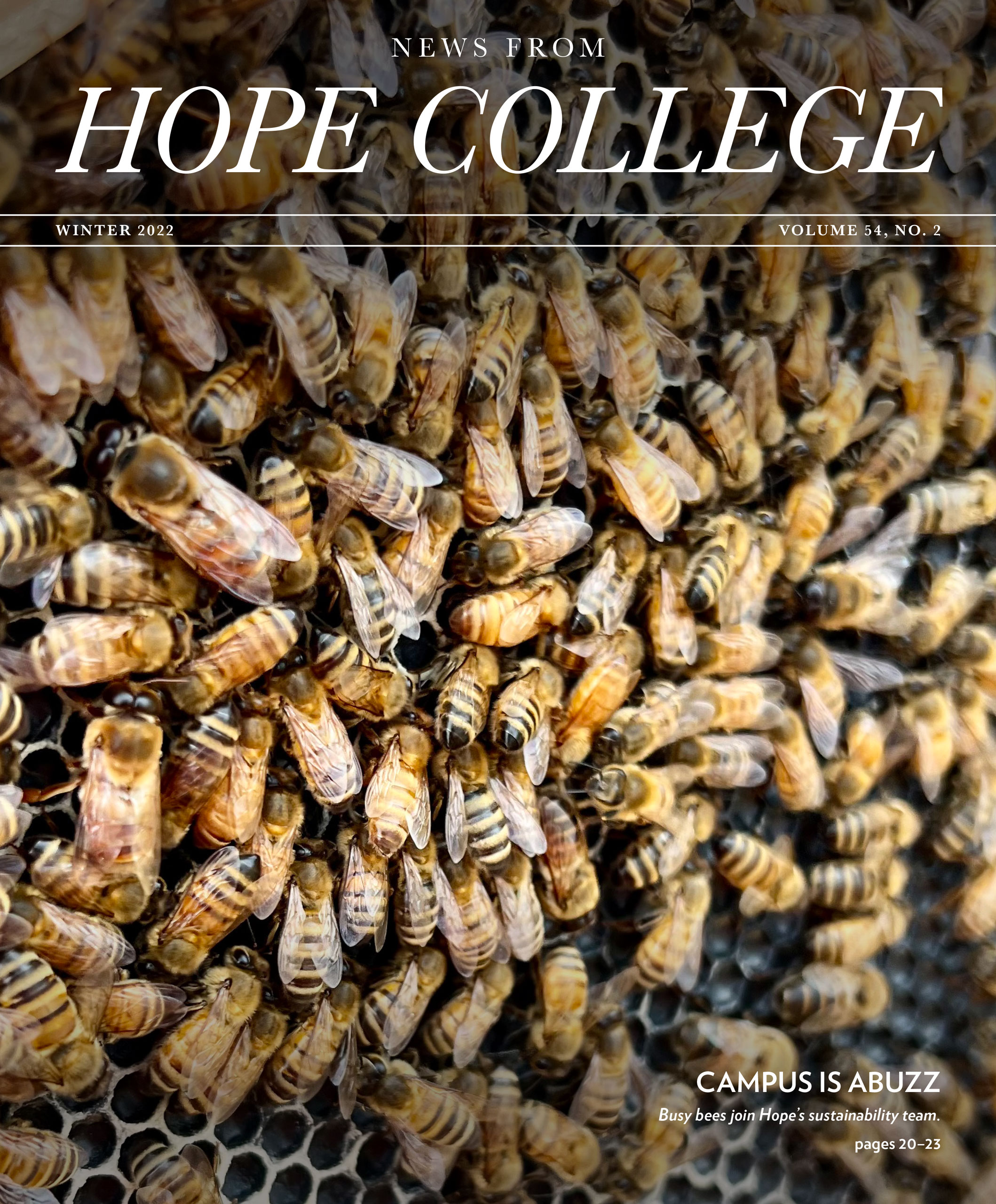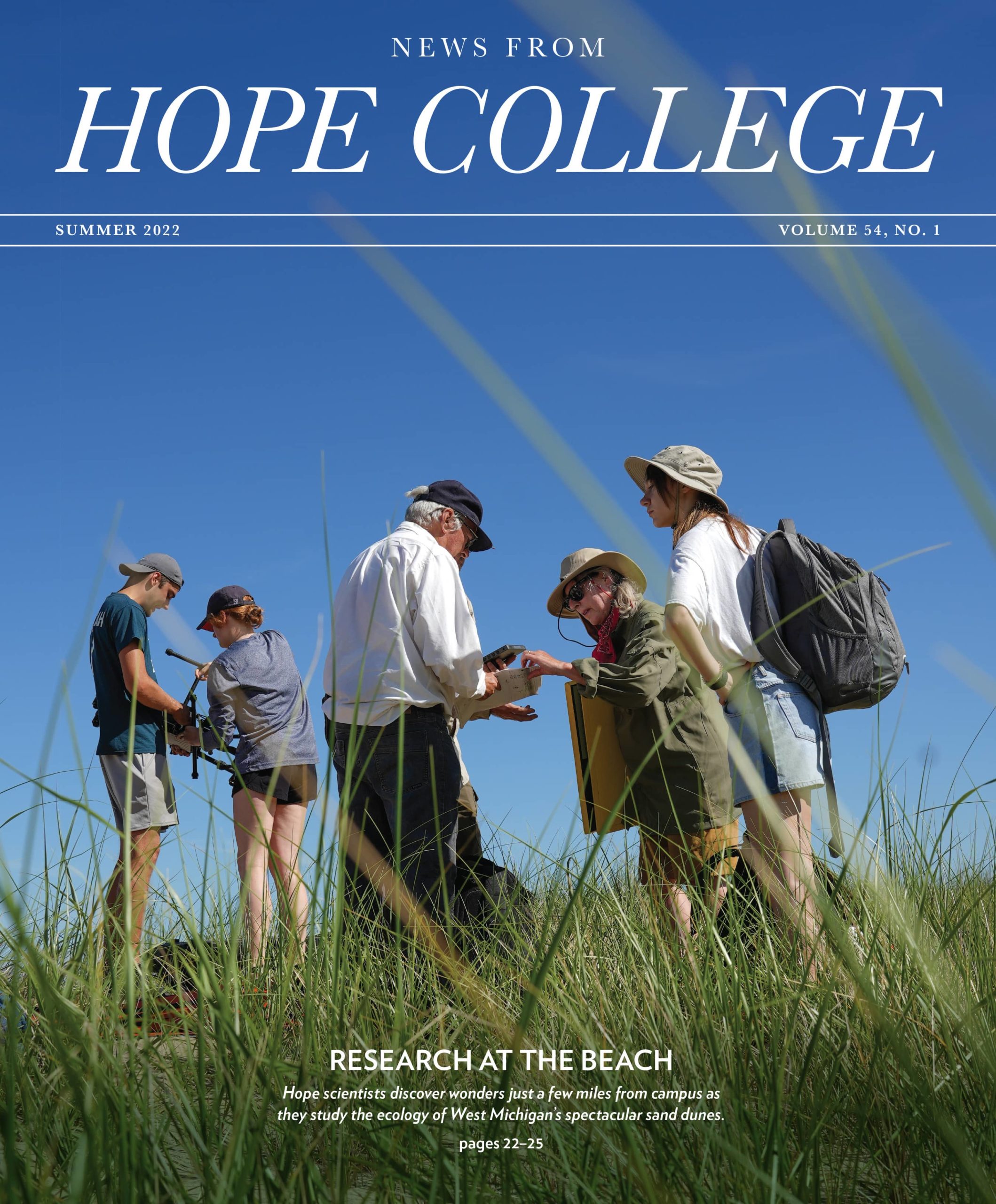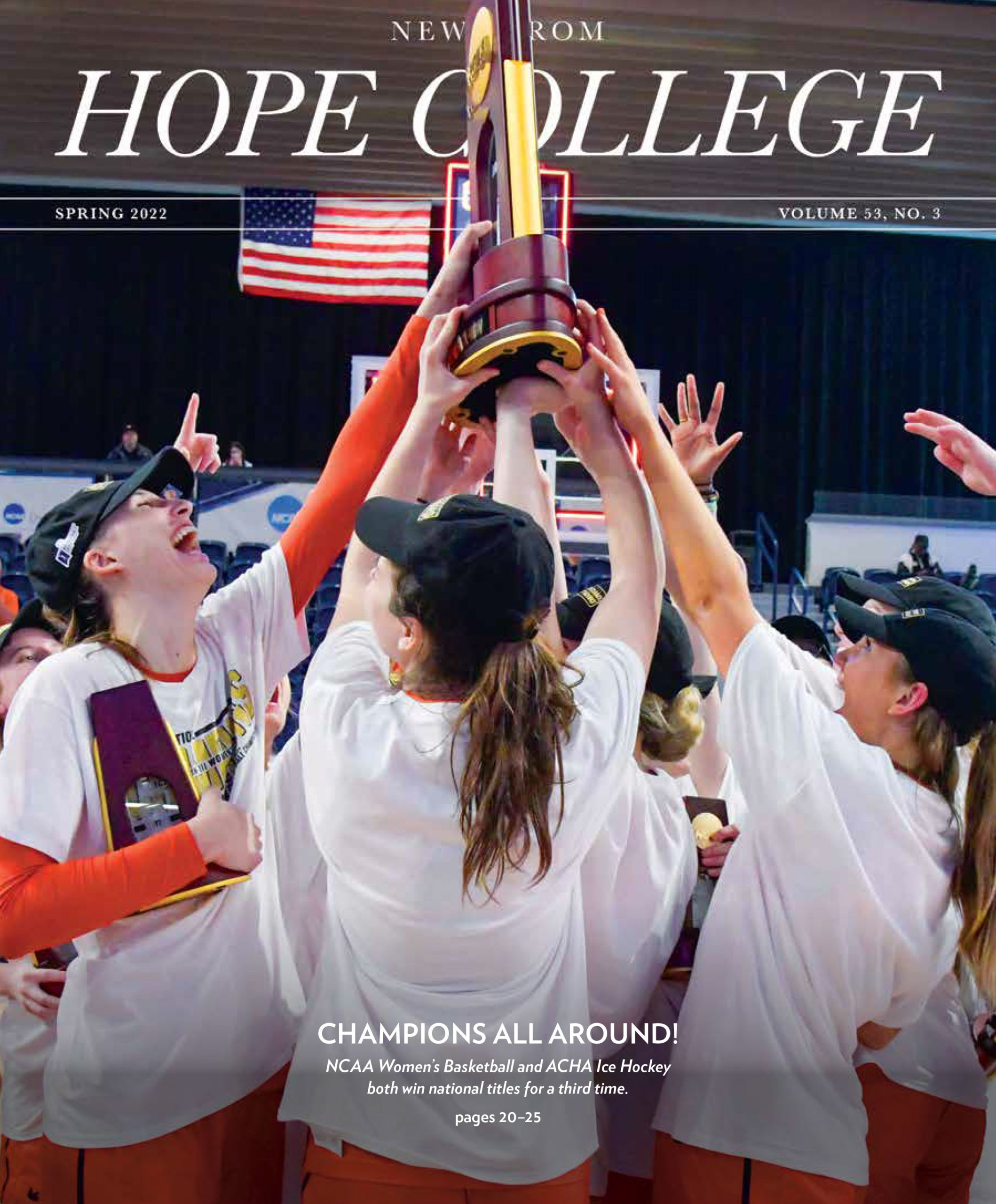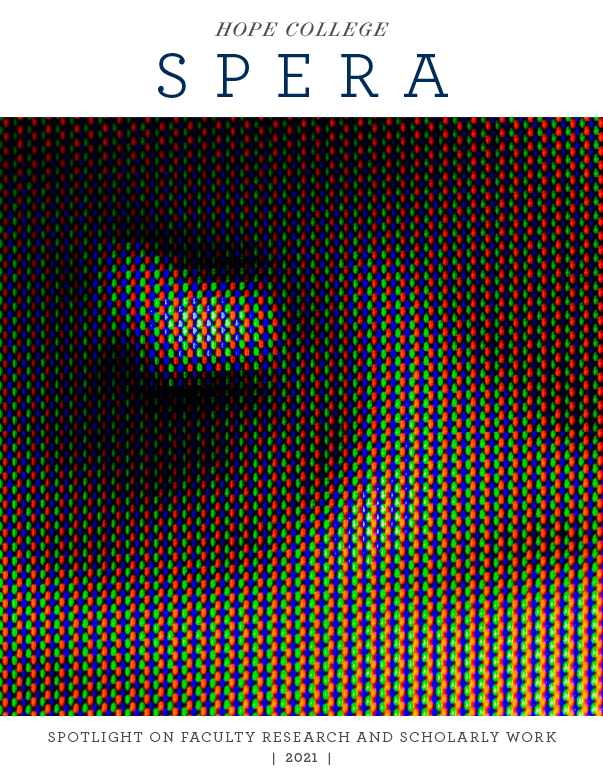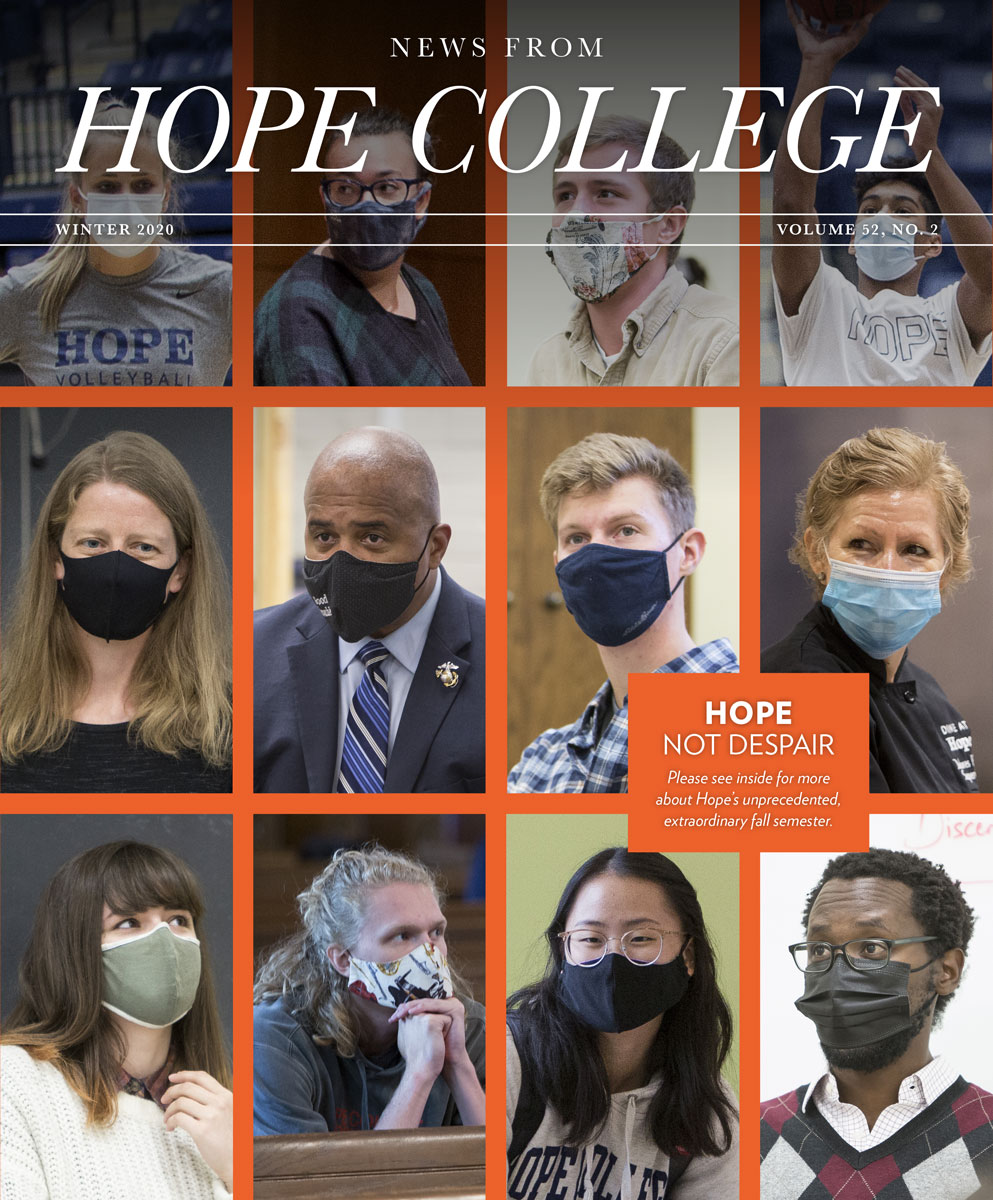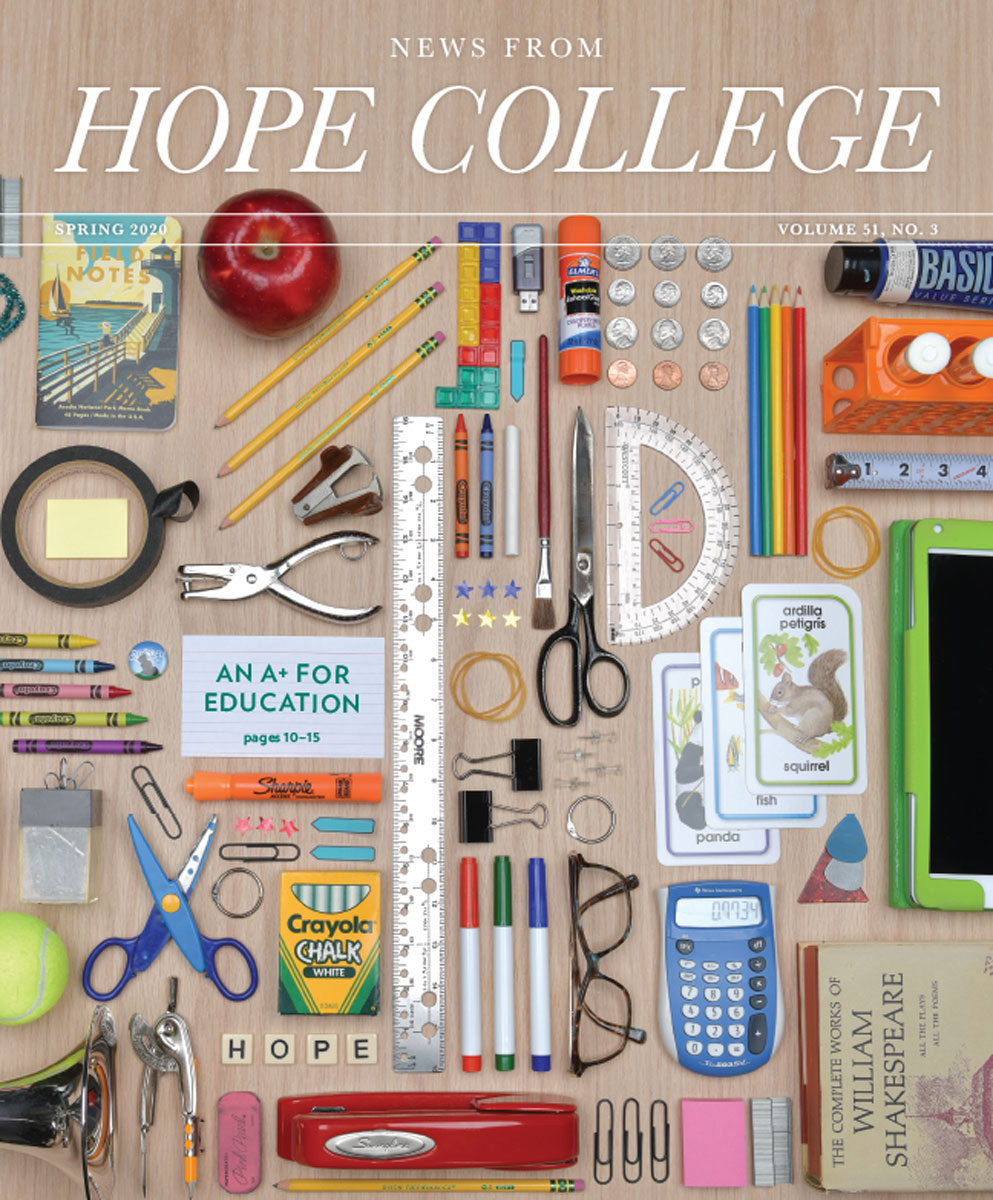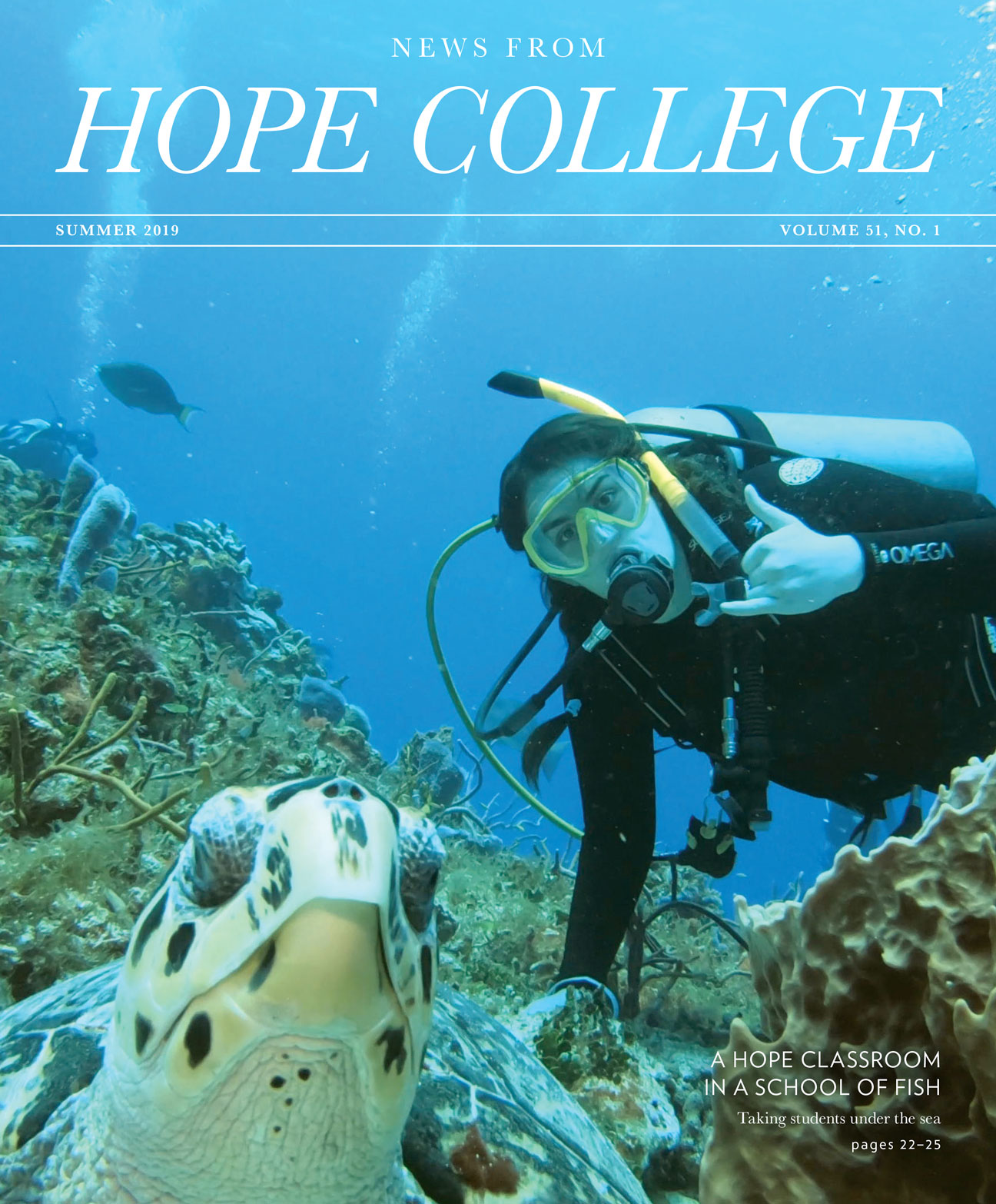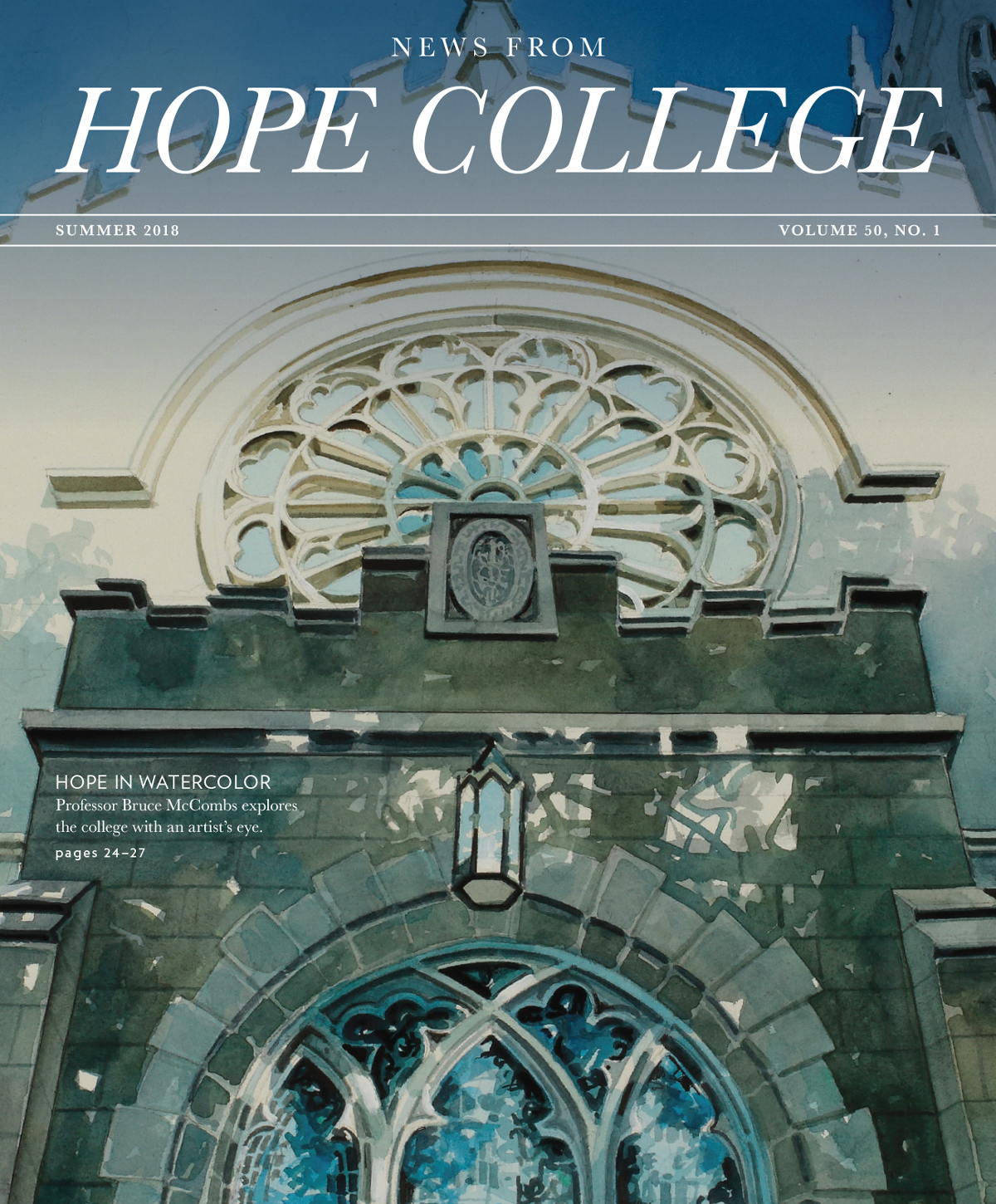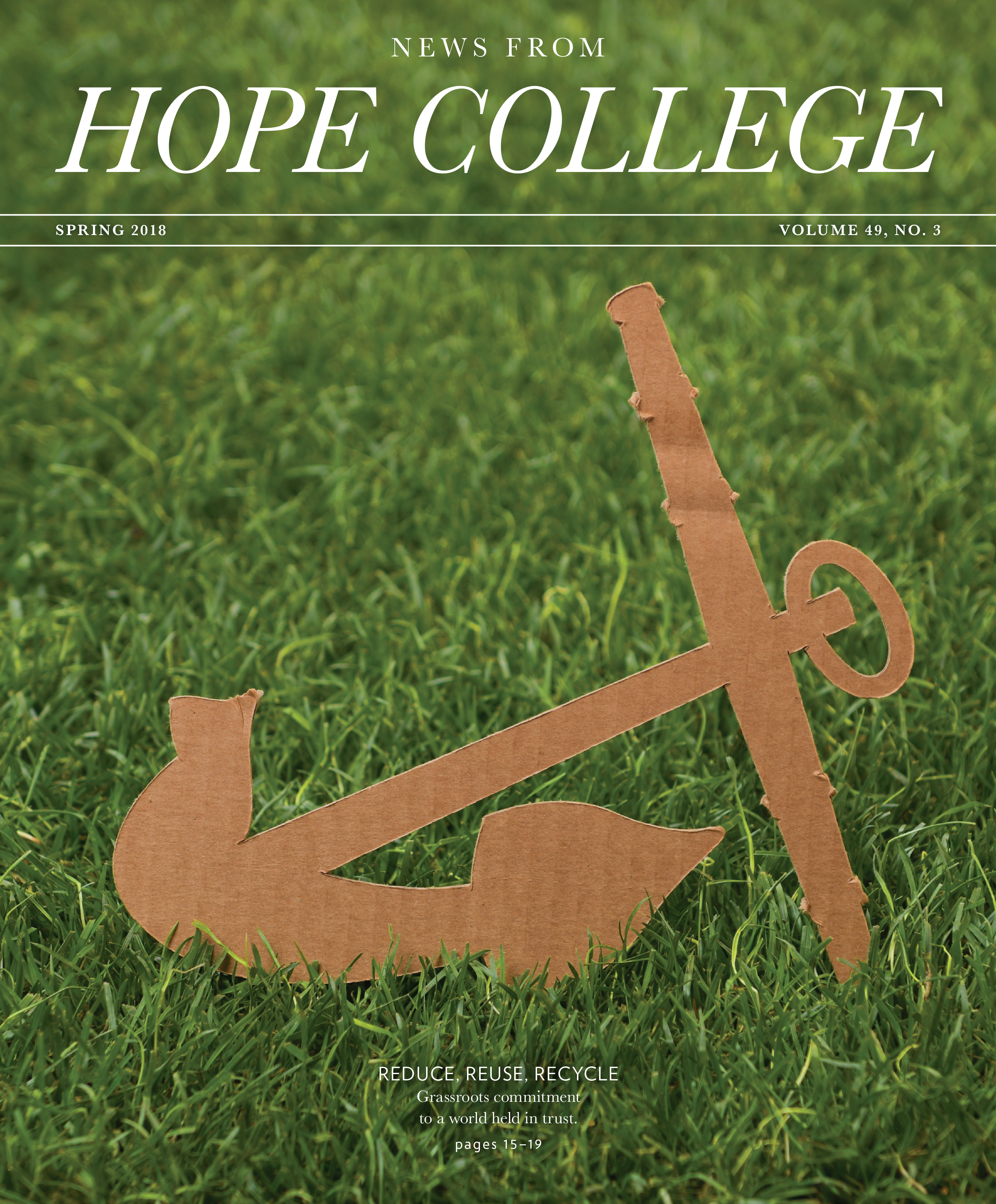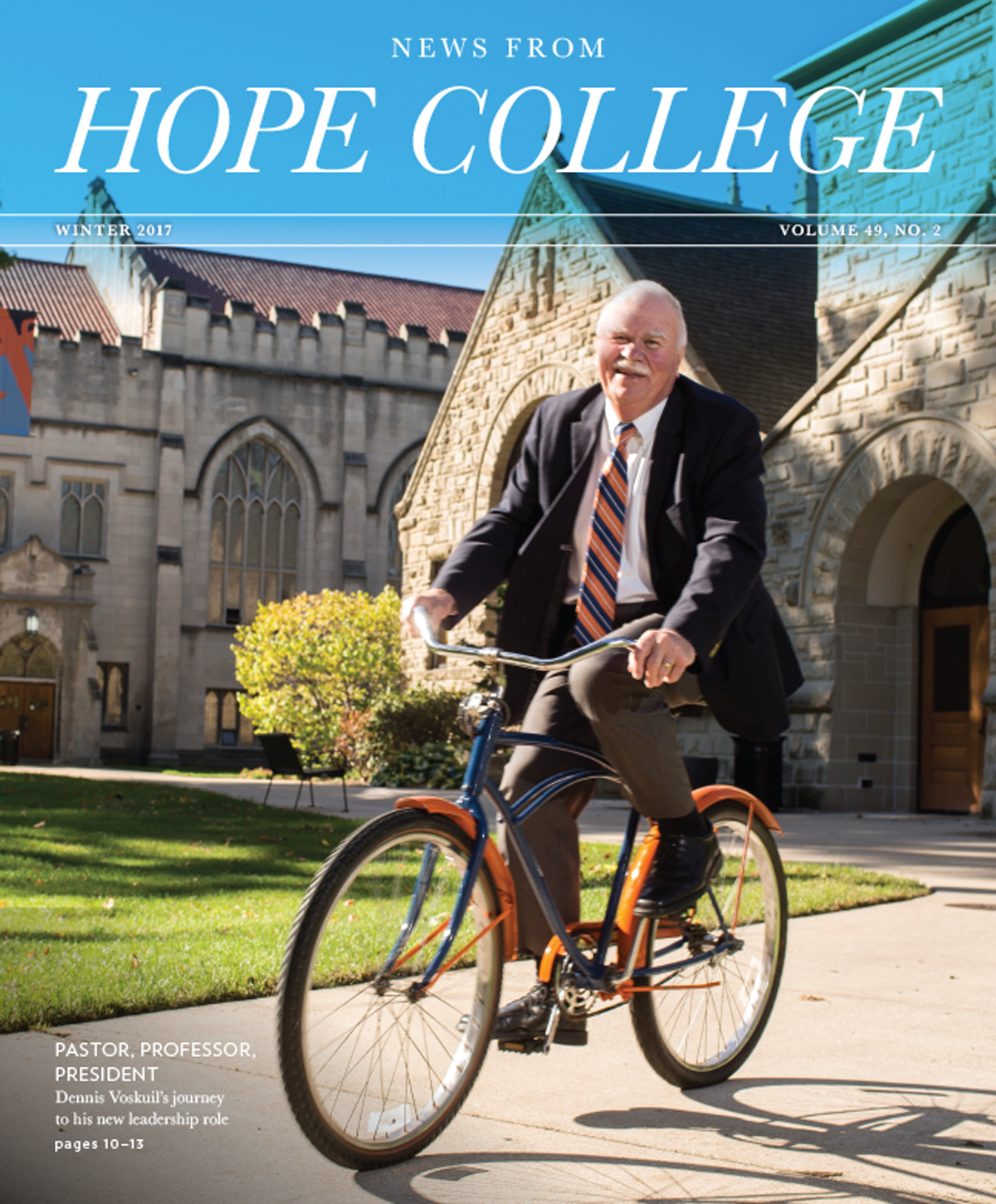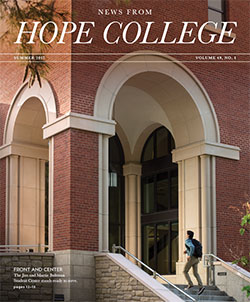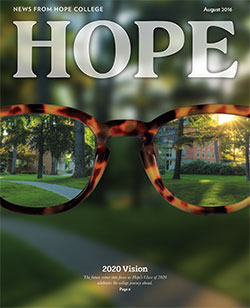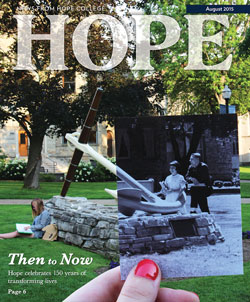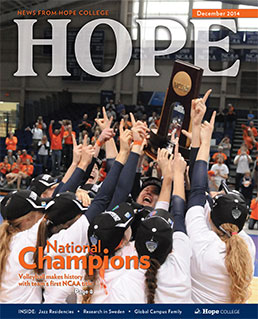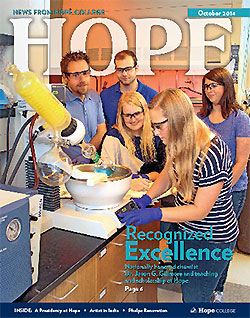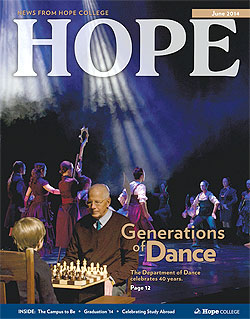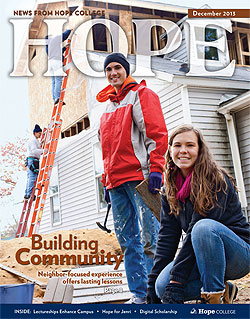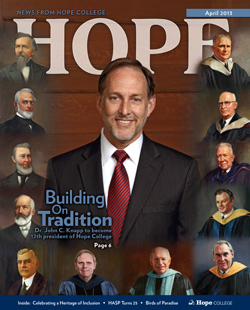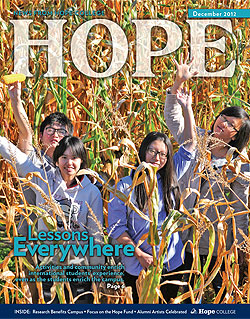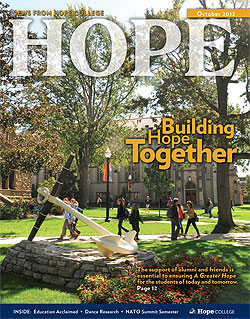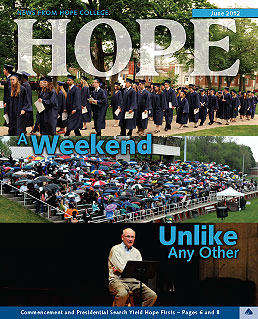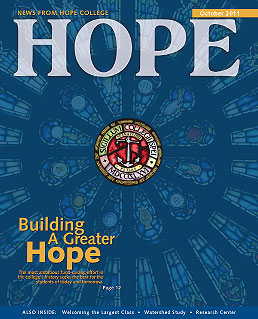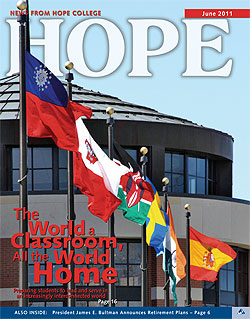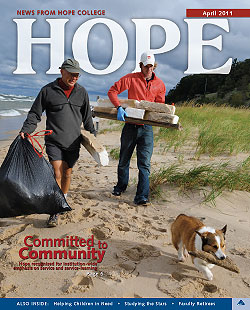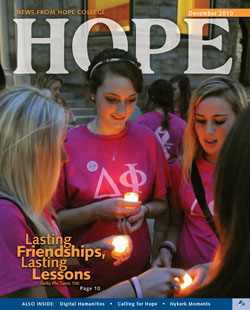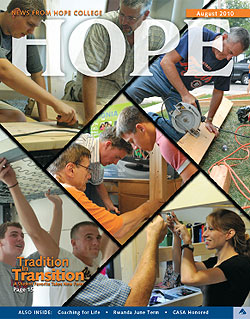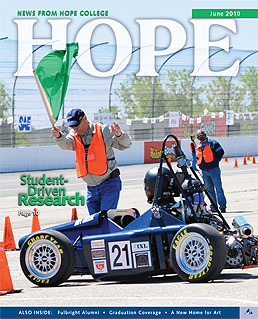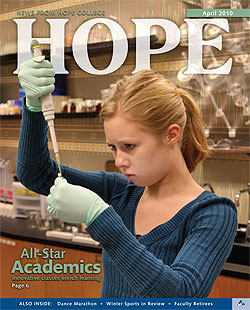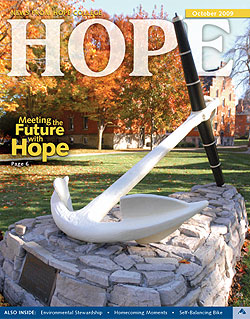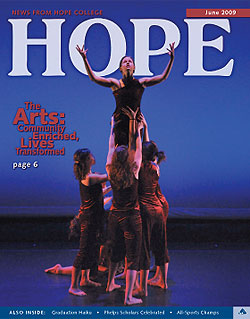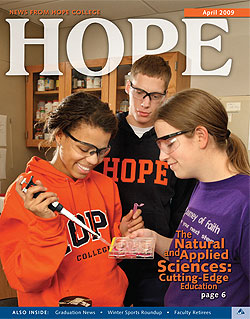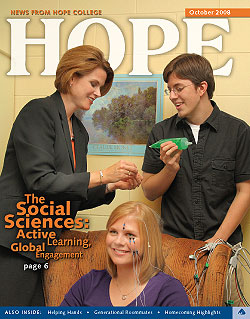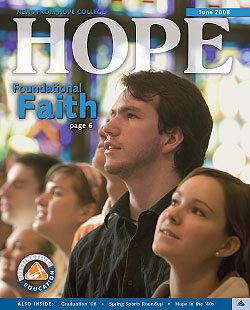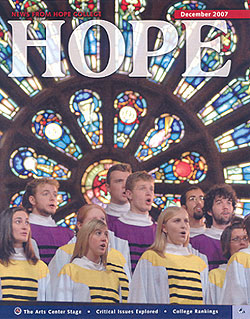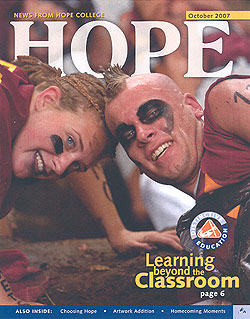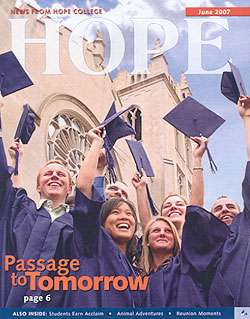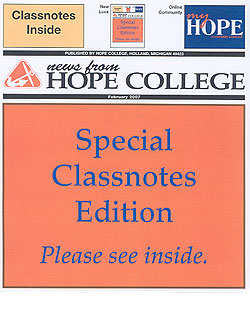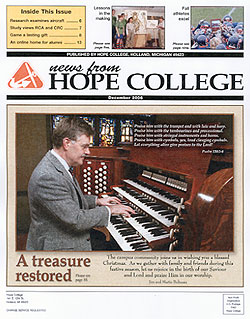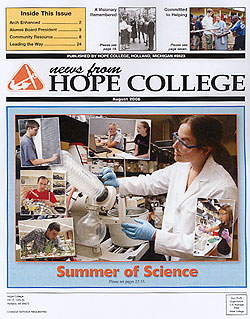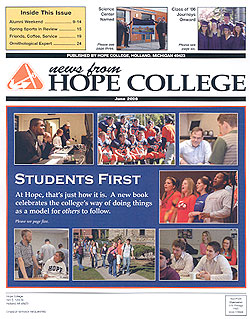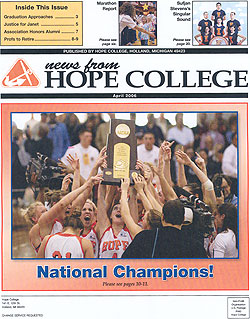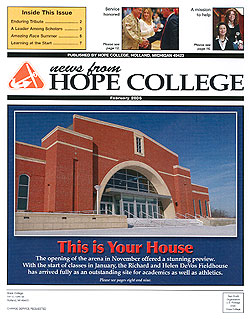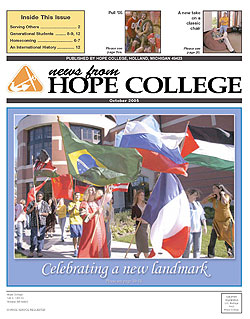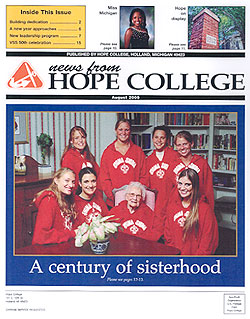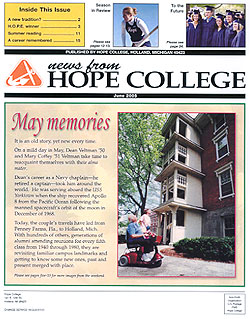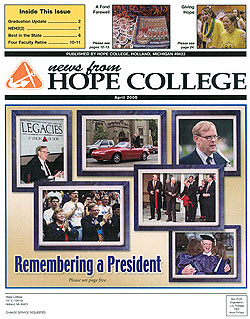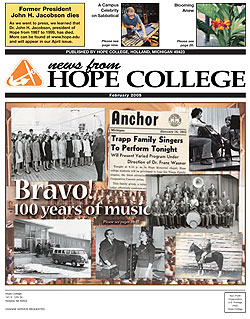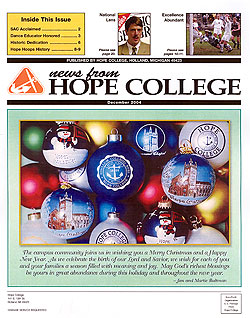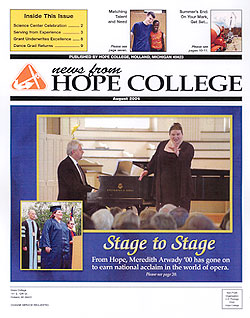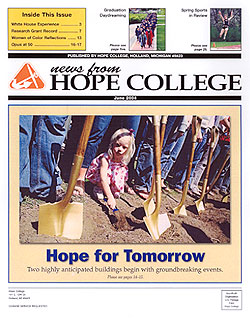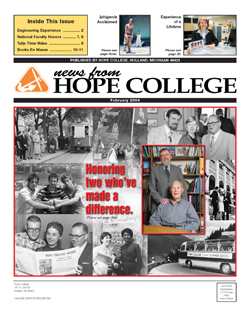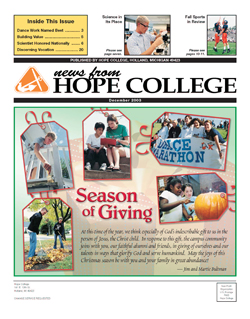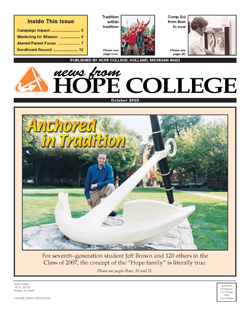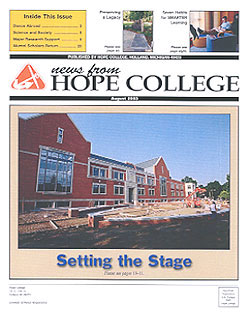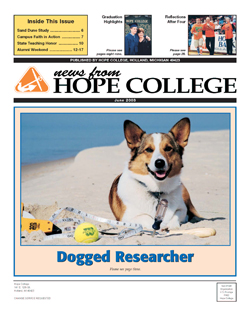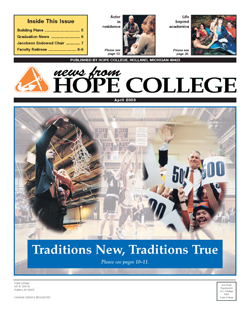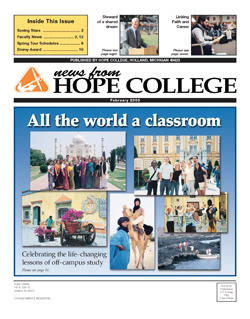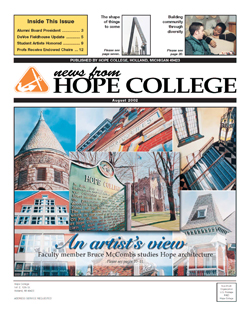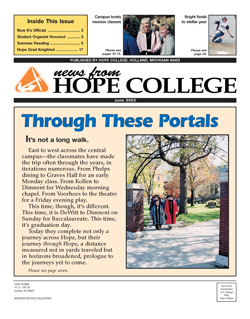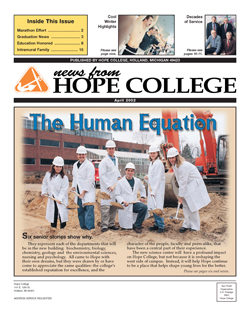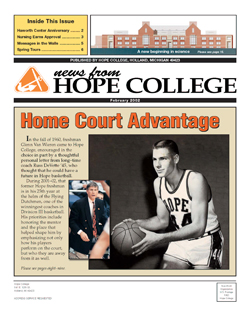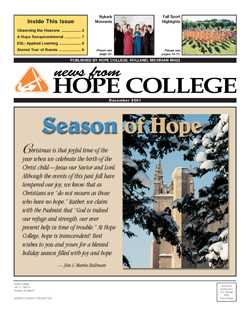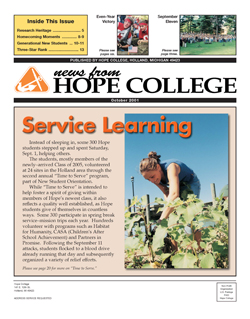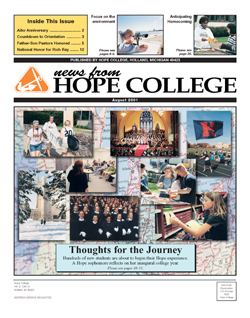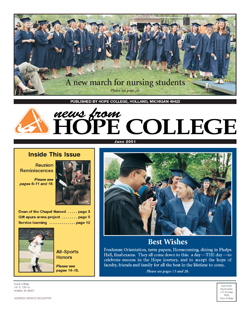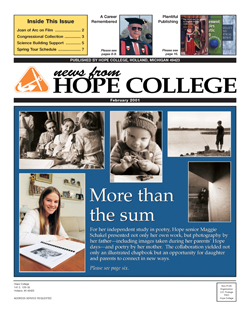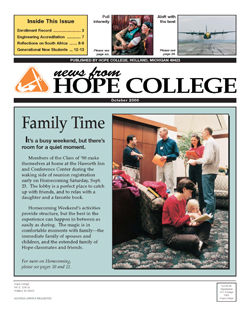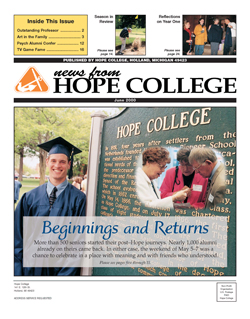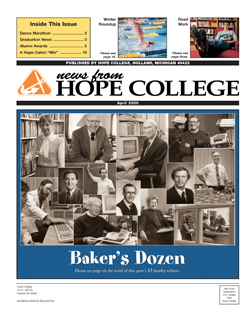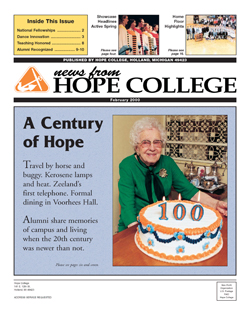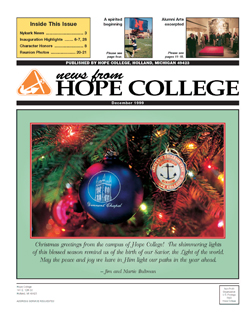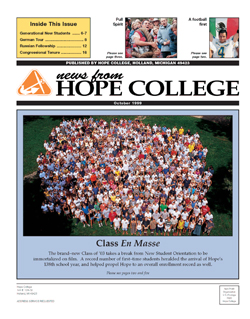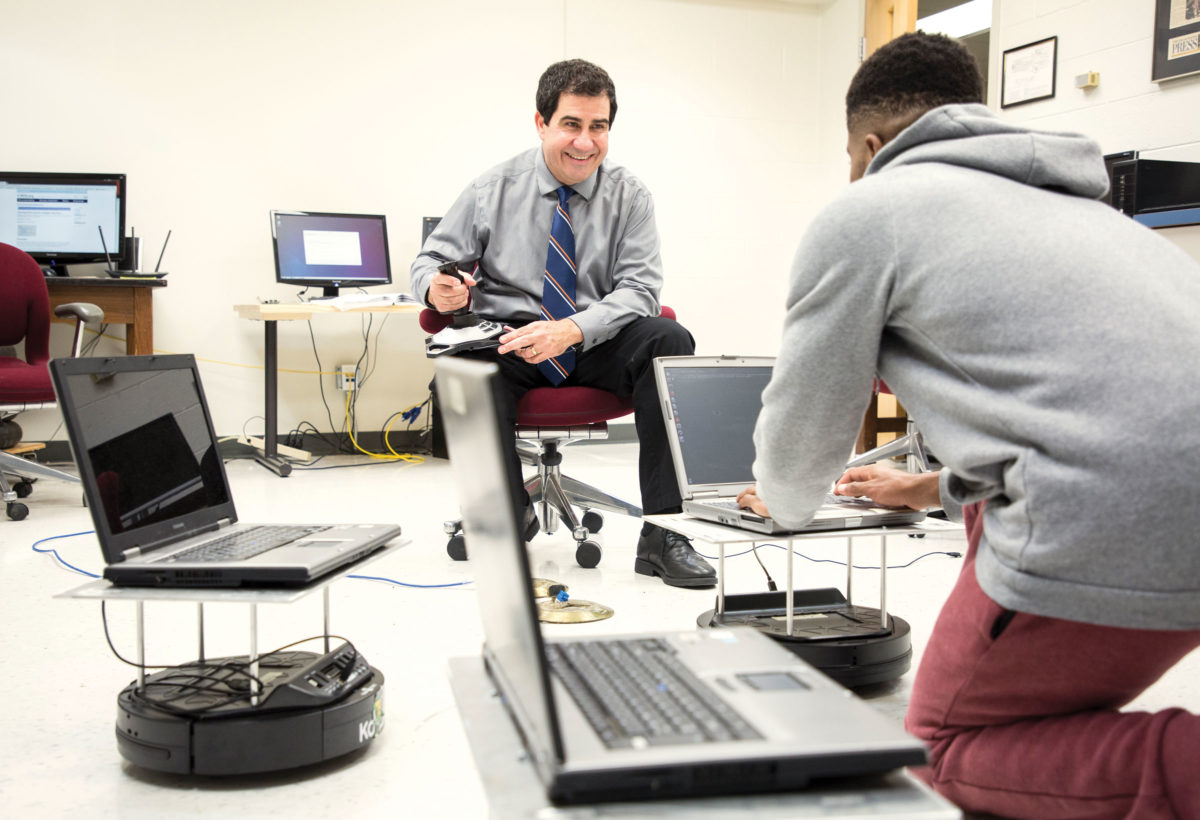Streamlining Robotic Coding
Miguel Abrahantes, Ph.D. | Professor of Engineering
In a Hope College engineering laboratory, a roomful of Roombas® — or more accurately, Kobuki mobile robots (shaped like the popular Roomba vacuums, but with no cleaning power) — are carrying on earthbound research that grew out of knowledge a professor acquired while working on other robots intended for space exploration.
And if the work succeeds, Dr. Miguel Abrahantes will have landed upon, among other discoveries, a strategy to significantly reduce the amount of computer power and processing needed to operate multiple robots simultaneously.
The “smart navigation systems” in 21st-century cars require massive amounts of data to operate, Abrahantes notes. For coordination of multiple robots’ activity, he hopes to streamline the process so that the data handling becomes more efficient and reliable.
His current exploration was launched by NASA. For 10 years beginning in 2006, Abrahantes’ research included projects with the federal agency’s scientists. He spent two summers at NASA’s Goddard Space Flight Center in Maryland, collaborating on a fellowship-funded project with a team of professors from across the country who specialize in various areas of robotics. “My focus was controlled robotics,” Abrahantes says. “That’s my Ph.D. area, control systems.”
Having organized a student robotics group at Hope in 2004 shortly after his arrival on campus, Abrahantes often brought his prized pupils along for the experience.
When funding expired for that program and NASA turned its attention elsewhere, he applied the knowledge he had absorbed to his current endeavor.
“What NASA wanted to do was create a robot that, instead of having wheels, would just tumble along,” he explains. “You could send it to the surface of places like Mars or the moon and the wheels would not be a problem getting stuck on the floor of the planet while exploring.”
“My part was just the programming side of it, but after I came back I built one with students. This idea has many pieces that are similar.”
“This idea” involves a fleet of autonomous robots that could be programmed to work together or independently, depending upon the circumstances. “You’ll have robots that will be navigating in a coordinated way,” Abrahantes says, “and need to share information and do different tasks.” In summer 2019 and during his sabbatical in the fall that followed, he equipped the robots for test runs with various numbers and combinations of sensors. By assessing the responsiveness and accuracy of these different assortments, he hopes to find the “less-is-more” sweet spot that delivers strong results with the minimum number of sensors, and hence to work in the coding to deliver the minimal amount of processing needed to coordinate the work of multiple units.
Unlike robots that are tasked with, say, dismantling bombs, these units would not necessarily have a human operator controlling their every move. They would be programmed once, and then set out to perform specific functions independently or as a team.
“You can imagine a group of robots that would be cooperating in disaster relief, in urban areas, rescues — also military applications,” Abrahantes suggests. “In areas where it’s hard to communicate. But they can be responding by themselves at different points.”
His goal, he says, is “to start implementing this hardware and software, putting them together and adding sensors and the communication capabilities. Then we’ll start studying the algorithms — how they communicate and navigate autonomously.” Hope students have been assisting him with the implementation from the beginning. “The students have actually taken to this project more than I have,” he beams.
In the summer of 2019, computer science major Brandon Maurice ’20 served as Abrahantes’ assistant. “It’s really piquing my interest in wanting to go into the engineering field in terms of programming,” Maurice says. And that interest may have been further sweetened by the project’s raspberry pies.
Just kidding. Not that kind. Raspberry Pi’s.
(Raspberry Pi is the model name of a bare-bones processing unit without keyboard or screen, manufactured by Bluetooth SIG, Inc.)
As the project got underway, the Kobuki robots — each one named by a student for one of the Teenage Mutant Ninja Turtles — were carrying, like turtle shells, laptop computers connected by a secure network to a desktop unit. Abrahantes rigged the laptop computers to the robots so he and his students could control the robots’ movements by keystrokes.
Later, Maurice replaced the laptops with Raspberry Pi units. “With Raspberry Pi’s the possibilities are endless in terms of what you can do with technology,” he says. “It’s awesome.”
Barring complications, Abrahantes hopes to take the computer-topped robots, rigged also with cameras that will enable them to maneuver around objects, out of the lab and into the field early this year.
One of his goals is to minimize the sensing capabilities in the communications. “How simple can you have the system that can do the tasks?” he asks rhetorically. “As you add capabilities, it becomes more and more complicated, but one approach is trying to reduce the amount of data required. Instead of having 10 sensors, see if it can be done with two or three.”

